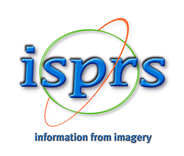|
2nd ISPRS International Workshop 3D-Arch 2007. "Virtual Reconstruction and Visualization of Complex Architectures" ETH Zurich, Switzerland, 12-13 July 2007 by Francesca Voltolini, FBK-IRST, Trento, Italy, www.itc.it Digital documentation of monuments and architectures is an important research topic that needs different sciences and technologies to reach good results. For this reason it is important to collaborate and exchange information between scientists coming from different fields. The second 3D-Arch Workshop on Virtual Reconstruction and Visualization of Complex Architectures was a chance to exchange experiences between scientists coming from photogrammetry, computer vision, computer graphics and archaeology fields. The workshop was held in ETH Zurich on 12 and 13 July 2007. It was organized by the Institute of Geodesy and Photogrammetry, ETH Zurich (Switzerland), FBK - IRST Trento (Italy) and the National Research Council of Canada (Ottawa, Canada). It was a jointly workshop of the ISPRS WG V/4 ('Virtual Reality and Computer Animation') and the ISPRS WG V/2 ('Cultural Heritage Documentation'). The organizing committee included Fabio Remondino, Sabry El-Hakim, Lorenzo Gonzo, Jan Boehm, Pierre Grussenmeyer and Klaus Hanke. An international scientific committee of 22 people reviewed all the submitted abstracts. |
|
|
